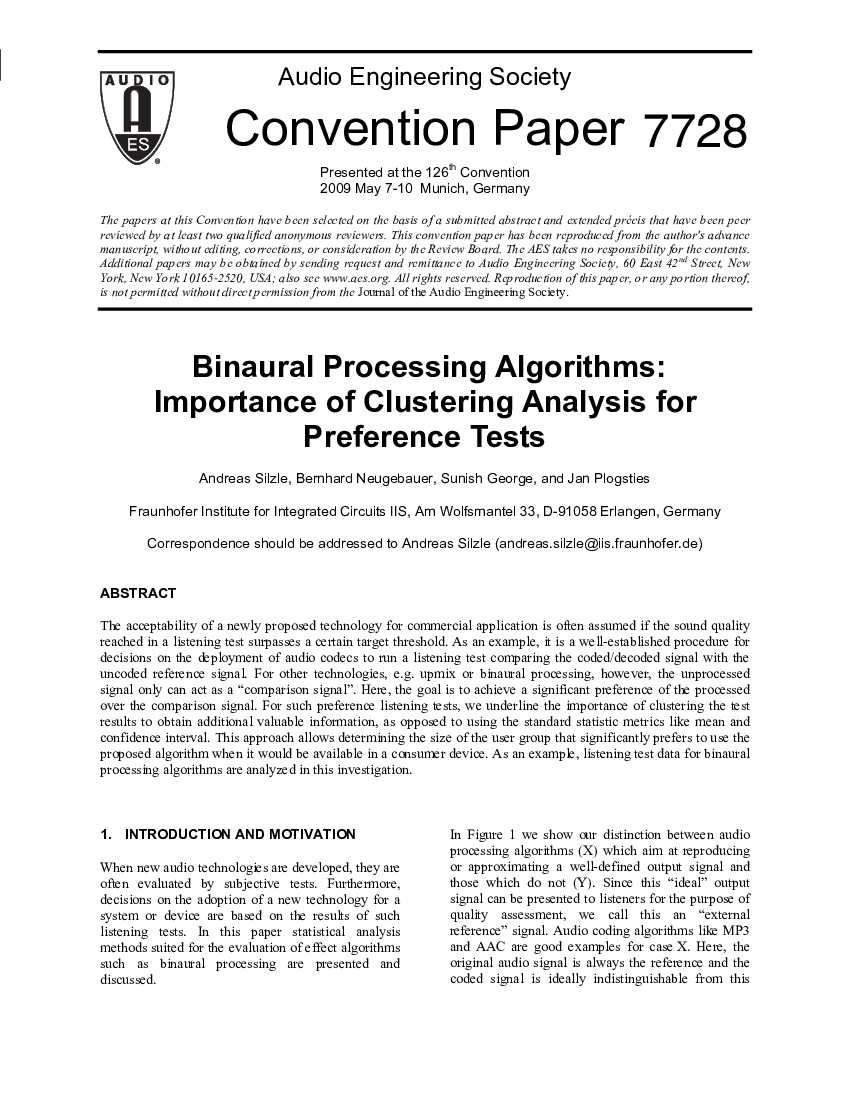Home / Publications / E-library page
You are currently logged in as an
Institutional Subscriber.
If you would like to logout,
please click on the button below.
Home / Publications / E-library page
Only AES members and Institutional Journal Subscribers can download
The acceptability of a newly proposed technology for commercial application is often assumed if the sound quality reached in a listening test surpasses a certain target threshold. As an example, it is a well-established procedure for decisions on the deployment of audio codecs to run a listening test comparing the coded/decoded signal with the uncoded reference signal. For other technologies, e.g. upmix or binaural processing, however, the unprocessed signal only can act as a “comparison signal”. Here, the goal is to achieve a significant preference of the processed over the comparison signal. For such preference listening tests, we underline the importance of clustering the test results to obtain additional valuable information, as opposed to using the standard statistic metrics like mean and confidence interval. This approach allows determining the size of the user group that significantly prefers to use the proposed algorithm when it would be available in a consumer device. As an example, listening test data for binaural processing algorithms are analyzed in this investigation.
Author (s): Silzle, Andreas; Neugebauer, Bernhard; George, Sunish; Plogsties, Jan
Affiliation:
Fraunhofer IIS, Erlangen, Germany
(See document for exact affiliation information.)
AES Convention: 126
Paper Number:7728
Publication Date:
2009-05-06
Import into BibTeX
Session subject:
Spatial Audio and Spatial Perception
Permalink: https://aes2.org/publications/elibrary-page/?id=14924
(808KB)
Click to purchase paper as a non-member or login as an AES member. If your company or school subscribes to the E-Library then switch to the institutional version. If you are not an AES member Join the AES. If you need to check your member status, login to the Member Portal.

Silzle, Andreas; Neugebauer, Bernhard; George, Sunish; Plogsties, Jan; 2009; Binaural Processing Algorithms: Importance of Clustering Analysis for Preference Tests [PDF]; Fraunhofer IIS, Erlangen, Germany; Paper 7728; Available from: https://aes2.org/publications/elibrary-page/?id=14924
Silzle, Andreas; Neugebauer, Bernhard; George, Sunish; Plogsties, Jan; Binaural Processing Algorithms: Importance of Clustering Analysis for Preference Tests [PDF]; Fraunhofer IIS, Erlangen, Germany; Paper 7728; 2009 Available: https://aes2.org/publications/elibrary-page/?id=14924
@article{silzle2009binaural,
author={silzle andreas and neugebauer bernhard and george sunish and plogsties jan},
journal={journal of the audio engineering society},
title={binaural processing algorithms: importance of clustering analysis for preference tests},
year={2009},
number={7728},
month={may},}